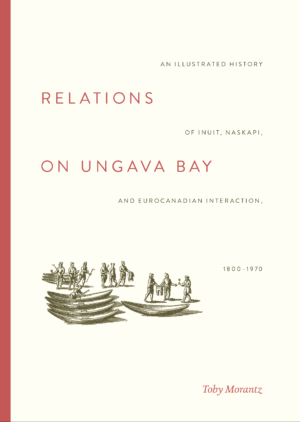Search Results: Returned 2 Results, Displaying Titles 1 - 2
-
-
2010., Avataq Cultural Institute Call No: IND 971.41 M829r v. 1 Edition: First edition. first printing. Availability:1 of 1 At Your Library Summary Note: “Vanishing races” was how bureaucrats and academics in the south throughout most of the 20th century viewed the people of the north. The Inuit and Crees of the southeastern Hudson Bay coast would have been included in this category because important food resources such as beluga whales, caribou and beaver were depleted in the early part of the century. Despite this and the many other significant changes that took place in the wake of European contact, the Inuit and the Crees found ways to adapt. In fact, the first two decades of the 1900s were very prosperous years for both groups, as they were for the English and French companies whose fur trade posts quickly dotted the coastline. More recent government involvement in administration of the region and the entry of the military were further grave challenges to the way of life and wellbeing of the Inuit and Crees of southeast Hudson Bay.
-
-
2016., Avataq Cultural Institute Call No: IND 971.41 M829r v. 2 Edition: First edition, first printing. Availability:1 of 1 At Your Library Summary Note: For hundreds of years, if not millennia, the Inuit and Naskapis relied on the food resources of the Ungava Peninsula. The Inuit focused their sights on the coastal marine life but also turned inland to hunt caribou. It was these vast migratory caribou herds that brought the Naskapis into the region from their forested base further south. The two peoples maintained their subsistence patterns until competition in the European fur trade disrupted their way of life. Despite the dangerous tidal currents, the Hudson’s Bay Company established and outfitted a series of posts ringing the coast, beginning slowly from the first few decades of the nineteenth century. Initially the Company’s commercial interest was the salmon fishery but the fur coat fashion of the early twentieth century and fierce fur trade competition spiralled the arctic fox and related species to valuable commodities. Both Inuit and Naskapis prospered until the Crash of 1929. The combined disappearance of caribou and fur markets ushered in a period of great poverty, only to be eased somewhat with the arrival of the U.S. Air Force base at Fort Chimo. Reluctantly and by degrees, the federal government began taking charge, providing new challenges to Inuit and Naskapis in their struggles to protect their culture and autonomy.






